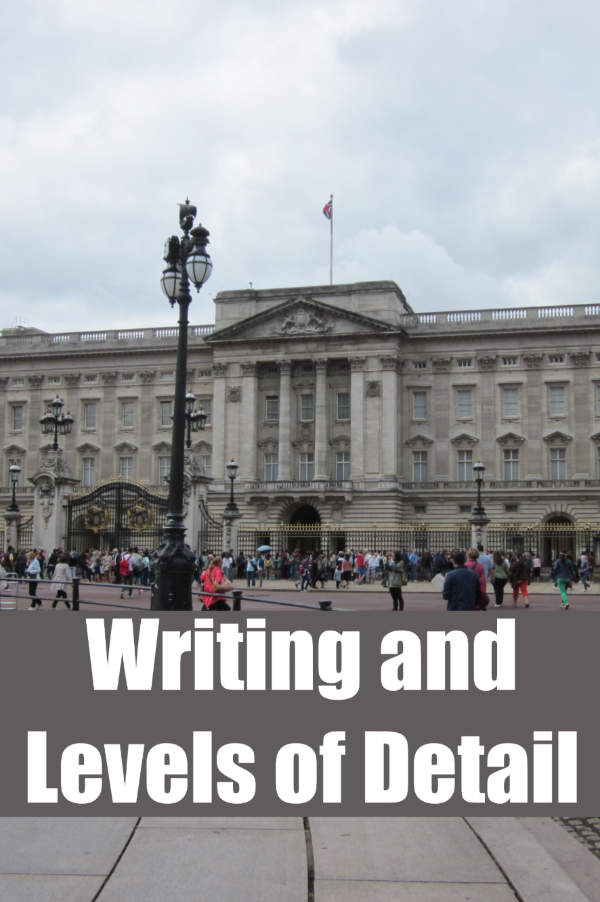When writing a story, how do you describe the setting or the way a character looks? How much detail do you provide? How much do you leave to the reader’s imagination?
Sitting on the steps of the Victoria Memorial in front of Buckingham Palace on a hot August afternoon, I watched my sister sketch the Palace.
Buckingham Palace is an impressive sight because of its size and its setting, but the building itself is rather plain. Even so, my sister had a challenge to incorporate the details: the markings above the windows, the ridged lines between the windows, the carving atop the ridged lines, the coat of arms.
Later that day, back in our hotel room, we searched the Internet for other Buckingham Palace sketches. The best ones highlighted a few key parts of the building, leaving other areas blurred. Even with this lack of detail, the result was unmistakeably Buckingham Palace.
It is the same with writing. If you try to include every little detail, you quickly bore yourself and the reader. But if you want the reader to feel the essence of a setting, mood or character, some detail is required. Selecting and appropriately describing that detail is part of the art of writing.
Very few details may be needed for someone who is familiar with the setting. If I write about being blinded by the exhaust fog from the car in front me at a red light and the sound of scraping ice off a car windshield with a piece of hard plastic, my prairie neighbours will recognize the cold Canadian winter. But is this enough for someone who’s never experienced temperatures below freezing?
In his book On Writing, Stephen King said “description usually consists of a few well-chosen details that will stand for everything else. In most cases, these details will be the first ones that come to mind.” I recently heard the descriptive phrase “he looks like he sits on park benches and yells at buses”. Nothing is said about this person’s physical characteristics, yet an image is evoked.
I don’t have any easy answers or tricks for determining what detail to include and how to describe it. I think we develop the skill through careful observation, trust in our impressions and feelings, and lots of reading.
A writer works to convey a particular idea, feeling, or message to the reader. The reader brings his or her own background, biases, perceptions, and imagination to the story. Magic occurs when the writer’s words connect with the reader’s imagination and experience, allowing the reader to feel and recognize the story.
Description begins in the writer’s imagination, but should finish in the reader’s. ∼Stephen King
There is creative reading as well as creative writing. ∼Ralph Waldo Emerson.
How do you provide detail in a story? Have you read a description of a place or person that particularly resonated?


I read mostly non-fiction, but the best writers use creative non-fiction techniques similar to those in “you are there” journalism. I’m glad you shared this. I’m going to try more mindful travel writing.
Suzanne, I think about detail this way more consciously when writing fiction, but am also trying to apply that in my travel writing.